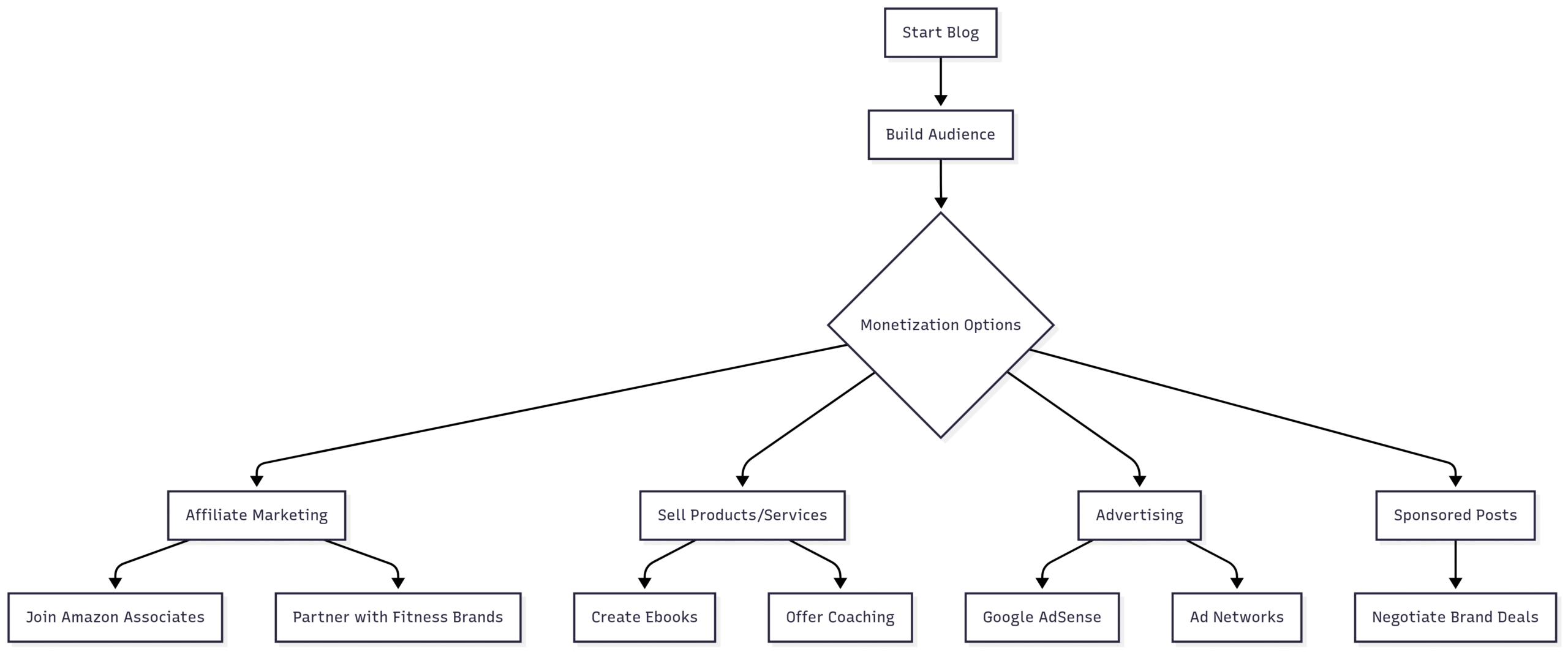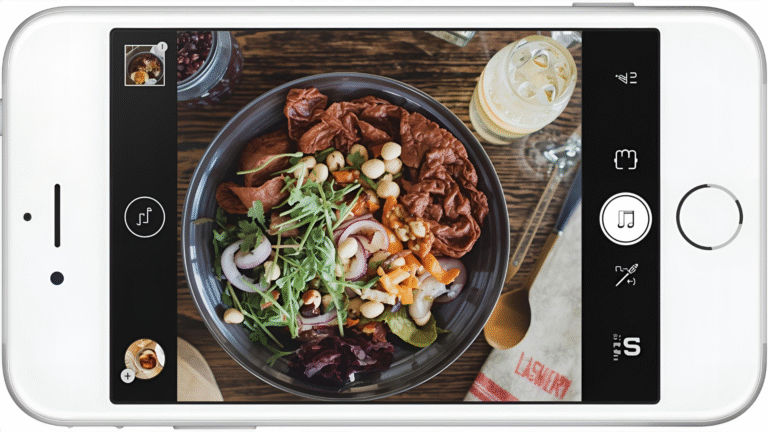How To Start A Fitness Blog In 4 Steps
Learn how to start a fitness blog in 4 steps: niche selection, platform setup, content creation, and monetization. Build your audience today!
Starting a fitness blog is an exciting way to share your passion for health, wellness, and fitness while potentially building a community and even generating income. Whether you’re a personal trainer, a fitness enthusiast, or someone eager to inspire others, creating a fitness blog allows you to connect with a global audience. This guide outlines the four essential steps to launch a successful fitness blog: planning and preparation, building and designing your blog, creating and promoting content, and exploring monetization options. With practical advice, actionable steps, and expert insights, you’ll have everything you need to establish a thriving fitness blog.
Step 1: Planning and Preparation
The foundation of a successful fitness blog lies in thorough planning. This step involves defining your niche, identifying your target audience, selecting a blog name and domain, choosing a blogging platform, and developing a content strategy.
Choose a Specific Niche
Selecting a niche is critical to standing out in the crowded fitness blogging space. A niche allows you to focus your content and attract a dedicated audience. Consider areas where you have expertise, passion, or unique insights. Popular fitness blog niches include:
- Weight Loss: Tips, strategies, and meal plans for sustainable weight loss.
- Muscle Building: Strength training routines, supplements, and recovery techniques.
- Yoga and Mindfulness: Guides for yoga poses, meditation, and mental wellness.
- Nutrition and Healthy Eating: Recipes, dietary advice, and meal prep ideas.
- CrossFit or Powerlifting: Workouts, techniques, and competition prep.
- Cardio and Endurance: Running, cycling, or HIIT-focused content.
Your niche should align with your knowledge and interests while addressing your audience’s needs. Research competitors in your chosen niche to identify gaps you can fill with unique content.
Define Your Target Audience
Understanding your audience is key to creating relevant content. Ask yourself:
- Who are they? (e.g., beginners, advanced athletes, busy professionals)
- What are their goals? (e.g., weight loss, muscle gain, stress relief)
- What challenges do they face? (e.g., time constraints, lack of knowledge)
- What type of content do they prefer? (e.g., tutorials, motivational stories, recipes)
For example, a blog targeting busy parents might focus on quick workouts and family-friendly healthy recipes, while one for powerlifters could emphasize advanced lifting techniques and recovery strategies.
Pick a Blog Name and Domain
Your blog name should reflect your niche, be memorable, and resonate with your audience. It should also be easy to spell and pronounce. Examples of effective fitness blog names include:
- Fit and Fueled (nutrition and fitness)
- Stronger Every Day (strength training)
- Zen Fitness Hub (yoga and wellness)
Once you’ve chosen a name, secure a domain name (e.g., www.fitandfueled.com). Use domain registrars like GoDaddy, Namecheap, or Google Domains to check availability. Aim for a .com domain, as it’s widely recognized and trusted. Ensure the domain is concise and avoids hyphens or numbers for simplicity.
Select a Blogging Platform
Choosing the right platform depends on your technical skills, budget, and customization needs. Popular options include:
| Platform | Pros | Cons |
|---|---|---|
| WordPress.org | Highly customizable, extensive plugins, SEO-friendly | Requires hosting, steeper learning curve |
| Wix | User-friendly, drag-and-drop builder, all-in-one hosting | Limited flexibility for advanced features |
| Squarespace | Sleek templates, easy to use, good for visuals | Higher cost, less plugin support |
| Blogger | Free, simple to set up, Google integration | Limited customization, outdated features |
| Tumblr | Free, social media integration, great for microblogging | Less professional, limited monetization options |
WordPress.org is the most popular choice for serious bloggers due to its flexibility and robust features. However, platforms like Wix or Squarespace are ideal for beginners seeking simplicity.
Choose a Hosting Provider
If you opt for WordPress.org, you’ll need a hosting provider to make your blog accessible online. Hosting services store your blog’s files and ensure it’s available 24/7. Compare providers based on speed, reliability, customer support, and pricing:
| Provider | Starting Price | Key Features | Best For |
|---|---|---|---|
| Bluehost | ~$2.95/month | Free domain, WordPress integration, 24/7 support | Beginners, WordPress users |
| SiteGround | ~$3.99/month | Fast performance, excellent support, security | Growing blogs, performance-focused |
| HostGator | ~$2.75/month | Affordable, easy setup, unmetered bandwidth | Budget-conscious bloggers |
Look for providers offering a free SSL certificate, automatic backups, and scalability to handle traffic growth.
Develop a Content Strategy
A content strategy outlines the types of content you’ll create and how often you’ll publish. Plan a mix of formats to keep your audience engaged:
- Blog Posts: In-depth articles, how-to guides, and listicles.
- Videos: Workout tutorials, recipe demos, or motivational vlogs.
- Infographics: Visual guides for exercises or nutrition tips.
- Newsletters: Weekly updates or exclusive content for subscribers.
Brainstorm at least 20–30 topic ideas to start. Examples include:
- “10 Beginner-Friendly Bodyweight Exercises”
- “How to Create a Balanced Meal Plan for Weight Loss”
- “The Benefits of Morning Yoga for Stress Relief”
Use tools like Google Trends, AnswerThePublic, or BuzzSumo to identify trending topics in your niche.
Step 2: Building and Designing Your Blog
Once you’ve laid the groundwork, it’s time to build and design your blog to create a professional, user-friendly experience.
Install WordPress (If Applicable)
If you choose WordPress.org, your hosting provider typically offers a one-click WordPress installation. Follow their instructions to set up your blog. After installation, log in to the WordPress dashboard to manage content, themes, and plugins.
Choose a Theme
A theme determines your blog’s look and feel. Select a theme that’s:
- Responsive: Adapts to mobile and desktop devices.
- Fast-Loading: Improves user experience and SEO.
- Customizable: Allows you to tweak colors, fonts, and layouts.
Popular WordPress themes for fitness blogs include:
- Astra: Lightweight and versatile, with fitness-specific templates.
- GeneratePress: Fast and SEO-friendly, ideal for customization.
- Neve: Modern design with a focus on mobile responsiveness.
Free themes are available, but premium themes (starting at ~$40–$60) often offer better support and features.
Customize Your Blog
Personalize your blog to reflect your brand:
-
Create Essential Pages:
- About Me: Share your story, expertise, and mission.
- Contact: Include a contact form or email for reader inquiries.
- Privacy Policy: Required for legal compliance, especially if monetizing.
- Add a Logo: Design a simple logo using tools like Canva or hire a designer on Fiverr.
- Choose Colors and Fonts: Use 2–3 brand colors and readable fonts (e.g., Open Sans, Lato). Ensure high contrast for accessibility.
Install Necessary Plugins
Plugins enhance your blog’s functionality. Essential WordPress plugins include:
| Plugin | Purpose | Free/Paid |
|---|---|---|
| Yoast SEO | Optimizes content for search engines | Free/Premium |
| WPForms | Creates contact forms | Free/Premium |
| Smush | Compresses images for faster loading | Free/Premium |
| Jetpack | Adds security, backups, and social sharing | Free/Premium |
| MonsterInsights | Tracks Google Analytics data | Free/Premium |
Install only necessary plugins to avoid slowing down your site.
Step 3: Creating and Promoting Content
Content is the heart of your fitness blog. Focus on creating high-quality, engaging content and promoting it effectively to grow your audience.
Write High-Quality Content
Your content should provide value, solve problems, and resonate with your audience. Key tips:
- Be Authentic: Share personal experiences or insights to build trust.
- Use a Conversational Tone: Make your content relatable and easy to read.
- Incorporate Visuals: Add high-quality images, videos, or infographics to break up text.
- Write Long-Form Content: Aim for 1,000–2,000 words per post to boost SEO and provide in-depth value.
Content ideas include:
- How-To Guides: “How to Start Strength Training at Home”
- Listicles: “15 Healthy Snacks for Post-Workout Recovery”
- Personal Stories: “How I Lost 20 Pounds with Consistent Habits”
- Expert Interviews: Conversations with trainers, nutritionists, or athletes.
Avoid relying on AI-generated content, as search engines like Google prioritize human-written, original content. Use tools like Originality.ai or Copyscape to verify authenticity before publishing.
Optimize for Search Engines (SEO)
SEO ensures your blog ranks higher on search engines, driving organic traffic. Key strategies:
- Keyword Research: Use tools like Ahrefs, SEMrush, or Google Keyword Planner to find relevant keywords (e.g., “beginner workout plans,” “healthy meal prep ideas”). Target low-competition, high-volume keywords.
-
On-Page SEO:
- Include primary keywords in titles, headings, and the first 100 words.
- Use descriptive alt text for images.
- Add internal links to related posts and external links to reputable sources.
-
Technical SEO:
- Ensure your site is mobile-friendly (test with Google’s Mobile-Friendly Test).
- Optimize loading speed using tools like Google PageSpeed Insights.
- Submit a sitemap to Google Search Console.
For advanced SEO, consider hiring an agency to audit your site and implement technical optimizations.
Promote Your Blog
Promotion is essential to attract readers. Strategies include:
- Social Media: Share posts on platforms like Instagram, Pinterest, and TikTok. Create short workout videos or infographics to engage followers.
- Email Marketing: Build an email list using tools like Mailchimp or ConvertKit. Send newsletters with exclusive tips or content.
- Guest Posting: Write articles for other fitness blogs to gain backlinks and exposure.
- Online Communities: Participate in fitness forums, Reddit, or Facebook groups to share your expertise.
- Paid Advertising: Use Google Ads or social media ads to drive targeted traffic.
Engage with your audience by responding to comments, answering questions, and fostering a community through social media or a blog comment section.
Step 4: Monetizing Your Fitness Blog
Monetization allows you to turn your blog into a revenue stream. Explore these options once you’ve built an audience:
Affiliate Marketing
Partner with fitness brands to earn commissions on sales generated through your links. Popular affiliate programs include:
- Amazon Associates: Promote fitness equipment, supplements, or books.
- Fitness Apparel Brands: Partner with companies like TuffWraps or Gymshark.
- Supplement Companies: Promote brands like MyProtein or Legion Athletics.
Include affiliate links in product reviews, gift guides, or workout gear recommendations. Disclose affiliate relationships to comply with legal guidelines.
Selling Products or Services
Create and sell your own fitness-related products, such as:
- Ebooks: Write guides like “30-Day Home Workout Plan” or “Healthy Recipes for Beginners.”
- Workout Plans: Offer personalized or pre-made fitness programs.
- Coaching Services: Provide one-on-one coaching or group fitness classes.
Use platforms like Gumroad or Teachable to sell digital products.
Advertising
Display ads on your blog to earn revenue based on clicks or impressions. Options include:
- Google AdSense: Easy to set up, but payouts are lower until you have significant traffic.
- Ad Networks: Join networks like Mediavine or AdThrive (require minimum traffic thresholds).
- Direct Ads: Sell ad space to fitness brands for higher rates.
Sponsored Posts
Collaborate with brands to create sponsored content, such as reviews or tutorials. Negotiate rates based on your audience size and engagement. Ensure sponsored posts align with your niche to maintain authenticity.
Here’s a sample monetization strategy flowchart:

Tips for Long-Term Success
To ensure your fitness blog thrives, follow these best practices:
- Consistency: Publish content regularly (e.g., 1–2 posts per week) to keep readers engaged and improve SEO.
- Analytics: Use Google Analytics or MonsterInsights to track traffic, popular posts, and audience behavior.
- Networking: Connect with other fitness bloggers for collaborations or guest posting opportunities.
- Continuous Learning: Stay updated on fitness trends, SEO strategies, and blogging tools to remain competitive.
Takeaway
Starting a fitness blog is a rewarding way to share your passion, inspire others, and potentially earn income. By choosing a niche, building a professional blog, creating valuable content, and exploring monetization, you can establish a platform that resonates with your audience. With dedication and strategic promotion, your fitness blog can become a go-to resource for health and wellness enthusiasts worldwide.
Please share these How To Start A Fitness Blog In 8 Steps with your friends and do a comment below about your feedback.
We will meet you on next article.
Until you can read, How To Share A Recipe Properly – Step By Step Instructions






